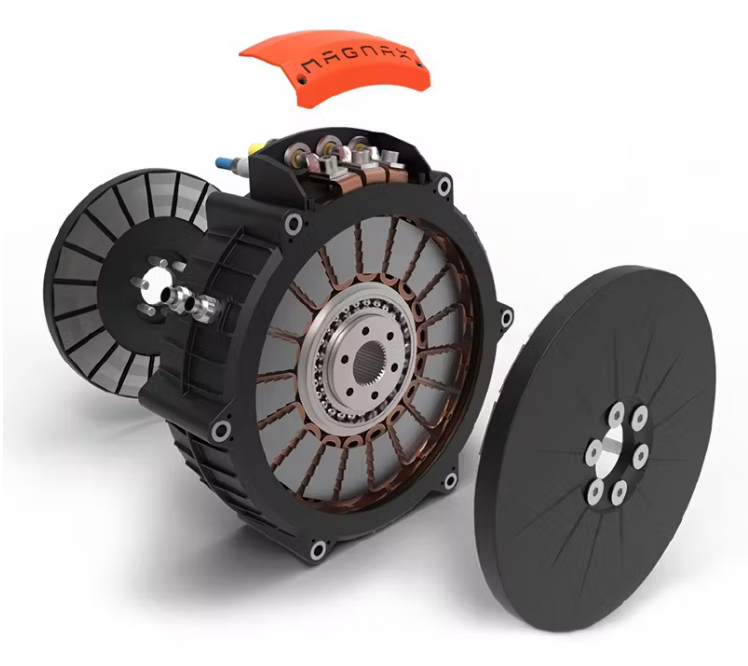An Axial Flux Magnetically Geared Generator (AFMGG) is an advanced electrical machine that combines the principles of axial flux generators and magnetic gearing to efficiently convert mechanical energy into electrical energy. This innovative design has emerged as a compact and high-performance alternative to traditional systems, addressing the growing demand for more efficient and lightweight energy solutions.
Axial flux generators differ from their radial flux counterparts in the way magnetic flux is directed. While radial flux generators feature flux that flows outward or inward along the radius, axial flux generators channel the magnetic flux along the axis of rotation. This design results in a disc-shaped structure that is both compact and lightweight, making it ideal for applications requiring space and weight efficiency. Common uses of axial flux generators include wind turbines, electric vehicles, and drones, where their superior power-to-weight ratio provides a significant advantage.
Magnetic gearing further enhances the efficiency of these systems by replacing mechanical gearboxes with magnetic fields. This approach transfers torque between input and output shafts without physical contact, significantly reducing wear, noise, and the need for lubrication. The result is a maintenance-free, reliable system that pairs seamlessly with axial flux generators to create an integrated solution.
Axial Flux Magnetically Geared Generators merge these two advanced technologies. By incorporating a magnetic gear within the generator’s structure, the system can handle high torque and operate efficiently at low speeds. This capability is particularly valuable in renewable energy systems such as wind turbines, where the magnetic gear increases the rotational speed at the generator’s core, enabling electricity generation even from slow-moving mechanical inputs. The design’s benefits include high power density, reduced maintenance needs, enhanced durability through non-contact operation, and exceptional efficiency.
The transition to axial flux designs marks a significant evolution from radial flux generators, which have long been the industry standard. Radial flux generators are cylindrical machines where magnetic flux flows radially. They are constructed with a stator containing copper windings, a rotor with magnets, and an air gap through which the magnetic flux travels. This proven and scalable design has been used extensively in applications such as traditional power plants, automotive alternators, industrial machinery, and general-purpose backup generators. Radial flux generators offer durability and versatility, particularly in high-speed and high-power applications, and their geometry facilitates straightforward cooling.
However, radial flux machines have limitations. Their cylindrical design often results in lower power density and bulkier structures, making them less suitable for compact, lightweight applications. Moreover, they are optimized for high rotational speeds and require gearboxes for low-speed uses, which can reduce efficiency and increase complexity. As modern industries demand lighter, more efficient systems with smaller footprints, axial flux designs and magnetically geared solutions have gained prominence.
The shift from radial to axial flux generators highlights the push for advanced technologies that maximize power output while minimizing weight and volume. Axial Flux Magnetically Geared Generators represent a cutting-edge solution, paving the way for more efficient and sustainable energy systems across industries. By optimizing the magnetic field, cooling, and structural integrity, these systems deliver unparalleled performance in applications ranging from wind and hydropower to electric vehicles and aerospace.

